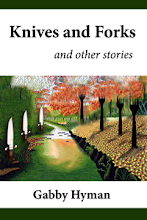 Sakurajima is one of the world's most active volcanoes. At 3,600 feet, rising from the plain on the island of Kyushu on Japan's Osumi Peninsula, the volcano has been known to dump ash on the heavily populated city of Kagoshima. From the top floor of the youth hostel where we spent our nights in the city, you could see tire tracks from cars and bicycles in the thin layer of ash that covered the streets. The leaves on the ginkgo trees were tan on the bottom and coated gray where they faced the sky.
Sakurajima is one of the world's most active volcanoes. At 3,600 feet, rising from the plain on the island of Kyushu on Japan's Osumi Peninsula, the volcano has been known to dump ash on the heavily populated city of Kagoshima. From the top floor of the youth hostel where we spent our nights in the city, you could see tire tracks from cars and bicycles in the thin layer of ash that covered the streets. The leaves on the ginkgo trees were tan on the bottom and coated gray where they faced the sky.The mountain is less imposing than Japan's largest volcano, Mount Aso, also located on Kyushu. Earlier in the week, we had taken a bus to the trailhead and climbed to the top of Aso, dizzy from altitude and the heavy sulfur in the air. On top, the Japanese had constructed concrete shelters around the caldera, small bunkers stocked with boxes of plastic hard hats that you could wear against the hail of rocks and magma. It felt as silly as it looked. The last time Asoyama had erupted, it tossed rocks the size of semi-trucks all the way into the center of Russia.
On this steamy summer's night, we sat in our room at the hostel mapping out our trek up yet another volcano scheduled for the following day. My calves burned and my lungs ached. We were on the volcano tour of a country with residents that we had been misled into thinking spoke some of our language. But in Kyushu, more than 900 miles from Tokyo, we found few residents who could say more than hello and goodbye.
Everywhere we went, dozens of kids, all adorned in black and white school uniforms and daypacks, flocked to us, asking us to sign their scrapbooks. I must have been an odd sight, towering over them with my black beard and shaved head. You could plan your entire trip around the punctuality of the national railroad, and whenever we stepped off the train we were surrounded by curious onlookers, some of whom would point at me and shout aloud the Japanese word for "beard".
Three or four volcanoes into our trek, we discovered that it was nearly impossible to be alone in Japan. We'd take buses from the train stations to the national parks, where we were instantly amidst a pack of students in their uniforms. No matter the difficulty, there would be hundreds of students on the mountain trails. We'd often look for unmarked paths or picked our way along streams and rivers to avoid the notoriety.
That night in Kagoshima, we decided to try our luck with Mount Unzen, a 4,000-foot smoker that rose in Nagasaki Prefecture. In the 1700s, Unzen had gone off and caused an earthquake, avalanche, and a tidal wave that killed more than 15,000 people. That's what you call a trifecta. Two years after our visit, it would go off again and kill more than 40 people, including a handful of volcanologists. But on the day of our visit, Unzen was in a quiet slumber.
To our delight, the cab we hired dropped us off in an empty parking lot. Where were the buses of students? We set off in earnest, passing through a long corridor of shrines that formed the beginning of the trail. Little grebes zeered between the trees and you could hear the faint gurgling of a stream. The sun slanted through the leaves and flickered as we walked, promising warmth through the morning fog.
Out on the ridge beneath the caldera, we paused to catch our breath. We heard the subtle wind and, from the distance, a train as it rattled northward toward the Inland Sea. Below, beyond the trees, you could see the orderly rice paddies and tendrils of smoke from the burning of husks.
The ridge went up at a mad angle. We made our way, stopping every few steps on the incline, then trudging off again. My shirt was soaked and so was the blue bandanna on my head. A set of wooden steps were wedged into the trail near the top of the ridge. And when we reached the summit, we stood gasping, hands on our knees, peering down into the steaming caldera.
The rim trail wended off in both directions, so we chose the route to the east and made our way into the shimmering waves of heat. The sulfur pierced our eyes and I tied the bandanna over my nose and mouth.
We were happy enough.
Then we spotted the remnants of a group luncheon at the edge of the crater. The diners had left 40 or 50 styrofoam trays, neatly arranged in a semi-circle, individual sets of chop-sticks keenly set across the tops of plates smeared with brown sauce and white grains of rice.
The bento boxes waited patiently for Mount Unzen to bear them away.




















1 comment:
Oh, wow, between your video suggestion on my blog (move over, Mick, here come Angelique and Jossie!) and this tale of a steamy night at the foot of a volcano, I feel as if I was in fire, bro! Many thanks.
Greetings from London.
Post a Comment